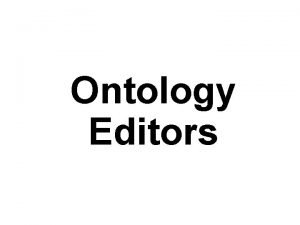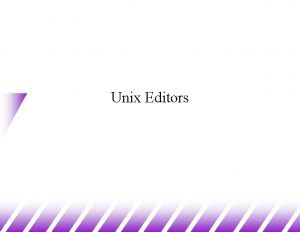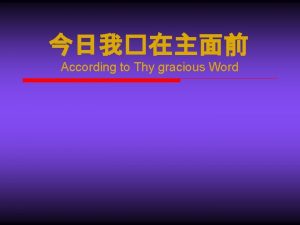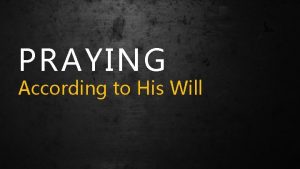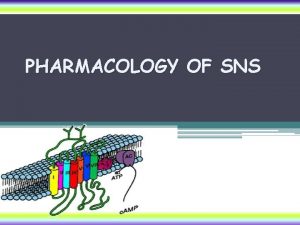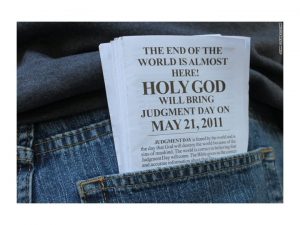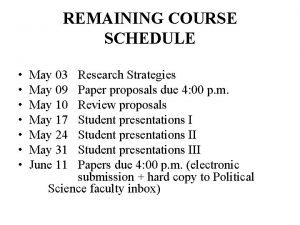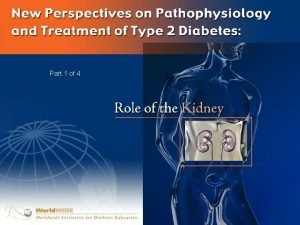According to the editors of NA it may


















- Slides: 18

According to the editors of NA, it may have been composed (orally) in the first half of the eighth century, circa 750 AD. We don’t know the author. Evidence in the poem indicates that different dialects work their way into the poem, suggesting that it was passed along, over time, from place to place, before being put into writing. The one manuscript appears to be late tenth century. The original manuscript was in the collection of Sir Robert Cotton (1571 -1631). The original manuscript was damaged in a fire in 1731 before a modern transcription. “Most of Old English poetry is contained in just four manuscripts” (NA 5). 1. The Authorship and Manuscript of Beowulf

Images of the original Beowulf manuscript

Alliteration: repeated consonant sounds ◦ “The organizing device of the line is alliteration…The Old English alliterative line contains, on average, four principle stresses each by a strong medial caesura, or pause” (NA 19). ◦ “When sung or intoned—as it was—to the rhythmic strumming of a harp, Old English poetry must have been wonderfully impressive…[and] dignified” (NA 19 -20). ◦ Key effects: aids memory, enhances flow 2. Old English Poetic Devices

Alliteration stands out in these lines and so does the medial caesura (pause) // Alliteration: example, lines 64 -70 (with red marks) The fortunes of war // favored Hrothgar. Friends and kinsmen // flocked to his ranks, young followers, // a force that grew to be a mighty army. // So his mind turned to hall-building; // he handed down orders For men to work //on a great mead-hall Meant to be a wonder // of the world forever; 2. Old English Poetic Devices

Kenning: use of an inventive compound of two words as a creative and striking way to represent something or someone. ◦ Examples (NA 6): ◦ “whale-road” = sea ◦ “life-house” = body ◦ ◦ ◦ More examples: “hall-watcher” (l. 142) = Grendel “death-shadow” (l. 160) = Grendel “corpse-maker” (l. 276) = Grendel Beowulf unlocked his “word-hoard” (l. 258) = opened his mouth (with access to a treasured vocabulary) ◦ What a kenning is not: a simple hyphenated adjective such as in “far-fetched treasures” (l. 36) is not a kenning. 2. Old English Poetic Devices

Litotes: ironic understatement Example (NA 6): “After the monster Grendel has slaughtered the Danes in the great Hall Heorot, it stands deserted. The poet observes, ‘It was easy then to meet with a man / shifting himself to a safer distance. ’” (Presumably, anyone nearby would run for dear life. ) Litotes downplays a situation It’s like the opposite of hyperbole (exaggeration) It makes one want to say, almost dumbfounded, “Well, that’s putting it lightly!” 2. Old English Poetic Devices

Litotes: ironic understatement More examples When Beowulf is rewarded for killing Grendel, the poet says, “it was hardly a shame to be showered with such gifts” (NA 54, l. 1054). Sometimes, understatement allows for greater decorum or modesty. Even so, it encourages reader response to “fill in the blanks. ” It allows the poet to supply an idea without spelling it out. It also demands attention by offering odd, unexpected descriptions. When a failed attempt at “peace-weaving” displaces Hildeburh and leaves her grieving the loss of her brother, her son, and her husband (who was killed by the Jutes), the poet says, she “had little cause to credit the Jutes” (NA 55, l. 1070). “Now, that’s putting it mildly!” 2. Old English Poetic Devices

Litotes: linked to a “mode of perception” ◦ “More than a figure of thought, irony is also a mode of perception in Old English poetry” (NA 6 -7). ◦ Sometimes, litotes exemplifies a world view characterized by a profound sense of the ups and downs of life. In the Medieval Age, a fascination with the image of the “wheel of fortune” would come to capture this world view that is marked by instability and unpredictability. The passages below, while not employing litotes, highlight unexpected turns. “Men were drinking wine / at that rare feast; how could They know fate, / the grim shape of things to come … ? ” (NA 61, l. 1262 -4). “There inside the hall, / Danes lay asleep, earls who would soon endure / a great reversal” (NA 62, l. 1279 -81). 2. Old English Poetic Devices

Litotes: linked to “a mode of perception” Sometimes, litotes reminds us that destiny takes surprising turns. An awareness of life’s highs and lows stands out at the very outset of Beowulf, when the poem starts with the story of the rise of the Danes and the rise of Shield Sheafson. When Shield died, his people gave him a spectacular burial at sea; they piled him with great treasures and gear, and the poet says, “They decked his body no less bountifully / with offerings than those first ones did / who cast him away when he was a child / and launched him alone out over the waves” (NA 35, 43 -46). In NA, a footnote explains, “Since Shield was found destitute, ‘no less bountifully’ is litotes or understatement; the ironic reminder that he came with nothing emphasizes the reversal of his fortunes. ” 2. Old English Poetic Devices

Litotes: related to theme of Ubi sunt ◦ “Where have all the flowers gone? ” ◦ Since litotes is often woven with a sense of life’s ups and downs, it can be related to the elegiac theme of Ubi sunt (where are they now? ) “In a famous passage, the Wanderer [in an Old English poem by the same name] articulates theme of Ubi sunt (where are they now? ): ‘Where has the horse gone? Where the young warrior? Where the giver of treasure? …” Beowulf is full of ironic balances and contrasts—between the aged Danish king and the youthful Beowulf, and between Beowulf the high-spirited young warrior at the beginning, and Beowulf, the grayhaired king at the end, facing the dragon and death” (NA 6 -7). ◦ Key Point: what is had is lost; (what is lost is found; repeat, and fade to gray. ) ◦ This awareness permeates Old English poetry. ◦ It’s expressed by the Ubi sunt theme, and it often surfaces through litotes. 2. Old English Poetic Devices

Poetic Epithet: a poetic name ◦ (epi thet = upon + “to place”): in Latin, it means a placing upon someone—it means an attribution, a poetic name (quality) that is put upon a person; often it is an adjective phrase that highlights a person’s salient trait (for example, “swift-footed Achilles, ” not just Achilles). ◦ Often it’s a sign of respect and community, emphasizing people know and value specific qualities in others. ◦ “A good king, one like Hrothgar or Beowulf, is referred to by such poetic epithets as ‘ring-giver’ [a kenning] and as the ‘helmet’ and ‘shield’ of his people” (NA 31). ◦ Example: “And so, my request, O king of the Bright-Danes, / dear prince of the Shieldings, friend of the people, and / the ring of their defense. . . ” (NA 42, l. 427 -9). 2. Old English Poetic Devices

What is the purpose of the poet? What can a grand heroic poem (or epic) such as Beowulf do for its audience and its culture? To To To entertain (especially in the mead-hall) transmit history, spread fame, and promote legacy honor and glorify deeds of heroes motivate warriors and provide role models promote (& raise questions about) values evident in tales promote national identity, pride, loyalty, and tradition (a feeling of being connected to something larger than oneself— connected to events and people of the past). 3. What is the role of poets (scops) in Beowulf?

◦ Examples: An attendant stood by with a decorated pitcher, pouring bright helpings of mead. And the minstrel sang, filling Heorot with his head-clearing voice, gladdening that great rally of Geats and Danes. (NA 44, l. 494 -98) 3. What is the role of poets (scops) in Beowulf?

◦ Examples: Meanwhile, a thane of the king’s household, a carrier of tales, a traditional singer deeply schooled in lore of the past, linked a new theme to a strict meter. The man started to recite with skill, rehearsing Beowulf’s triumphs and feats in well-fashioned lines, entwining his words. He told what he’d heard repeated in songs about Sigemund’s exploits, all those many feats and marvels…. (NA 51, l. 866 -75) 3. What is the role of poets (scops) in Beowulf?

◦ Examples: They sang then and played to please the hero Words and music for their warrior prince, Harp tunes and tales of adventure: There were high times on the hall benches And the king’s poet performed his part. (NA 55, l. 1062 -66) 3. What is the role of poets (scops) in Beowulf?

“Christian writers like the Beowulf poet were fascinated by the distant culture of their pagan ancestors and by the inherent conflict between the heroic code and a religion that teaches that we should ‘forgive those who trespass against us’ and that ‘all they that take the sword shall perish with the sword. ’ The Beowulf poet looks back in that ancient world with admiration for the courage of which it was capable and at the same time with elegiac sympathy for its inevitable doom” (NA 5). Beowulf proclaims, “It is always better / to avenge dear ones than to indulge in mourning” (NA 64, l. 1384 -85). 5. In what ways does the speaker of the poem seem somewhat apart from the culture he depicts?

“It is now widely believed that Beowulf [as it has come to us as a written text] is the work of a single poet who was a Christian and that his poem reflects the well-established Christian tradition. The conversion of the Germanic settlers in England had been largely completed during the seventh century…. The monster Grendel is said to be a descendent of Cain. There allusions to God’s judgment and to fate (wyrd) but none to pagan dieties. References to the new testament are notably absent, but Hrothgar and Beowulf often speak of God as though their religion is monotheistic. With sadness the poet relates that, made desperate by Grendel’s attacks, the Danes pray for help at heathen shrines—apparently backsliding as the children of Israel had sometimes lapsed into idolatry. ” (NA 30) “The entire poem could be viewed as the poet’s lament for heroes like Beowulf who went into the darkness without the light of the poet’s own Christian faith” (NA 31). 5. In what ways does the speaker of the poem seem somewhat apart from the culture he depicts?

What appear to be the qualities of the ideal hero in Beowulf? What do these qualities suggest about the values of the culture? In what ways does Beowulf contrast with other heroes? • James Bond Don Juan • Luke Skywalker • Tinkerbell • Peter Pan • Lightning Mc. Queen • Dora the Explorer • Batman • Ironman • Etc. • 4. Heroic Qualities Valued by Anglo-Saxon Culture
 Loader design options
Loader design options Ascii
Ascii Asian council of science editors
Asian council of science editors Ontology editors
Ontology editors Hci design patterns
Hci design patterns Tư thế ngồi viết
Tư thế ngồi viết Voi kéo gỗ như thế nào
Voi kéo gỗ như thế nào Thẻ vin
Thẻ vin V cc
V cc Thơ thất ngôn tứ tuyệt đường luật
Thơ thất ngôn tứ tuyệt đường luật Từ ngữ thể hiện lòng nhân hậu
Từ ngữ thể hiện lòng nhân hậu Sự nuôi và dạy con của hổ
Sự nuôi và dạy con của hổ Thế nào là hệ số cao nhất
Thế nào là hệ số cao nhất Diễn thế sinh thái là
Diễn thế sinh thái là Vẽ hình chiếu vuông góc của vật thể sau
Vẽ hình chiếu vuông góc của vật thể sau Phép trừ bù
Phép trừ bù Lời thề hippocrates
Lời thề hippocrates Vẽ hình chiếu đứng bằng cạnh của vật thể
Vẽ hình chiếu đứng bằng cạnh của vật thể



